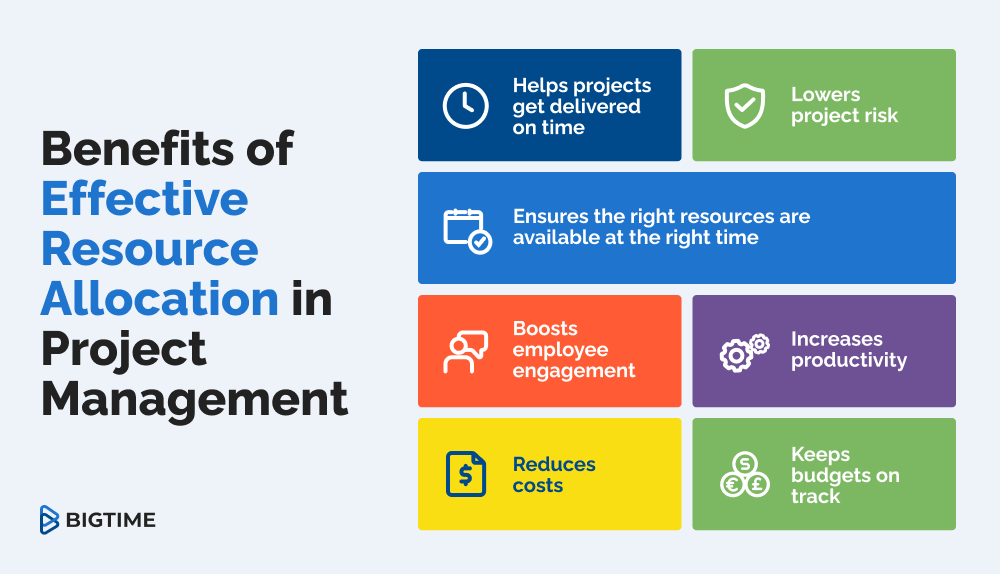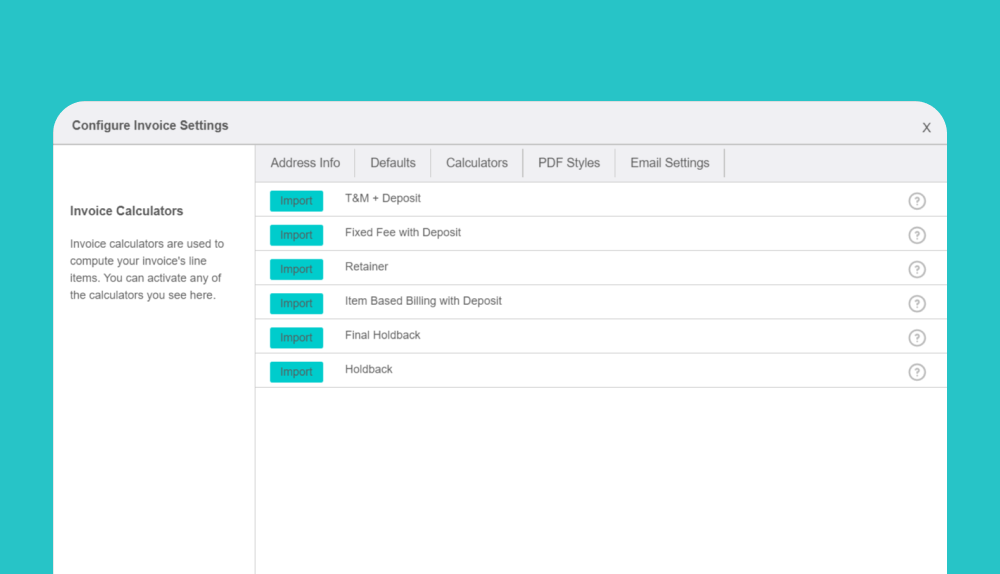.png)
Last updated March 20th, 2023
As many project managers and firm owners know, resource management isn’t always a walk in the park. Issues arise with the under or overallocation of resources, resources taking time off, and staff excelling at certain tasks and not others to name a few. It can be a real challenge to figure out who and how much time to put into a project. Resource allocation in project management, while tricky, is super important to growing your bottom line and keeping clients happy with on-time deliverables.
What is resource allocation in project management? Resource allocation in project management is the process of assigning the best available resources to tasks and projects. And if you want to run a successful project, then it’s important to have the right resources. These resources can include people, money, tools, and more.
You might also know the term, capacity planning. Resource allocation and capacity planning go hand in hand — it manages workloads to ensure resource over allocation or under allocation doesn’t happen. Then, if needed, people are reassigned based on current resource availability and project timelines.
Benefits of Resource Allocation in Project Management
Project management is all about being on time and within budget for successful project delivery, but that is often easier said than done. A key strategy to optimizing success is having an effective process for project management resource allocation, which can provide the following benefits:
- Helps projects get delivered on time
- Lowers project risk
- Ensures the right resources are available at the right time
- Boosts employee engagement
- Increases productivity
- Reduces costs
- Keeps budgets on track
- Keep on reading to discover common resource allocation problems that you might already be dealing with, and how to solve these issues to optimize delivery success and client satisfaction.
Resource Allocation Problems, Issues, and Solutions
Resource Allocation Problem 1: Not Having a Clear Project Scope
Before you can even start allocating resources, you first need to define the scope of the project. This should involve identifying project goals, objectives, deliverables, and timelines. When those details are determined, you can break down the project into smaller parts and allocate resources according to each phase’s needs.
The next key step is monitoring and adjusting resource allocation as needed as the project progresses in order to stay on track. The clearer the communications are among all stakeholders, the better you’ll be able to address resource allocation issues in a timely manner and meet project objectives.
But wait, this doesn’t seem like a resource allocation problem… it is! You need to understand the scope of a project to make resource allocation work for you and your team.
Pro tip: When you use a resource allocation tool like BigTime, you get access to historical data from your firm on past projects completed. With real-time reporting, you can see just how much time was under- or over-spent, how many people worked on the project, and how long it took. Measuring past performance is the best way to forecast and understand the scope of a project, all leading to successful resource allocation.
Resource Allocation Problem 2: Having Unclear and/or Low Staff Utilization
One of the biggest challenges project managers face is determining how many resources are needed for each task, who those resources should be, and how they should be allocated from the start.
One of the easiest ways to check whether your resource allocation efforts are working and successful is by tracking your team’s utilization rate. To calculate the utilization rate, look at the percentage of time spent on billable projects vs. the total time worked, in other words, it measures how busy employees are.
While an employee may work 40 hours a week, it’s pretty much impossible to do 40 hours of billable work. When you factor in lunch breaks, phone calls, meetings, trips to the coffee machine, etc., it’s easy to see how time can be spent on things other than work. However, when looking at your firm’s utilization rate, it’s really important to get the balance just right. If your rate is too high, it might mean that you need more resources and if your rate is too low, you’re probably not bringing in enough work for the number of people on your project team.
If your firm is experiencing unclear or low staff utilization rates, take a step back and reflect on how your firm is currently tracking these rates, along with your project resource allocation plan altogether. Who is managing resources within your firm? Are you using contractors? If so, what is the effect on your bottom line? Is your team accurately and actively tracking their time?
By answering and evaluating questions like these, you can start to understand what you need to do to gain better visibility into your staff utilization. Next steps to overcome this problem might include re-prioritizing work assignments, improving communication, providing development opportunities, and monitoring and adjusting utilization levels as needed.
Did you know?: BigTime makes it easy to optimize your resource capacity and avoid under/under utilization by giving your team the project visibility they need to succeed.
Resource Allocation Problem 3: Lack of Resources
Whether we like it or not, a lot of things are just totally out of our control. Kids get sick, cars break down, doctor appointments come up, life happens. You can have a project perfectly scoped out, scheduled, and resources allocated, but unexpected things will always happen during a project (unless you’re extremely lucky). This can result in delays, poor project quality, missed opportunities, and an increase in costs.
How do you solve for a lack of resources? When something unforeseen pops up, the quickest way to solve the resource allocation issue would be to look at your team for a replacement. Does anyone have time to help? If not, it might even be necessary to look for alternative resources, such as hiring a freelancer or contractor or collaborating with other departments or teams to share resources, depending on the need. However, the best thing you can do for everyone involved is to think ahead!
Prevent this in the future by looking at task dependencies. Specifically, look at other responsibilities (or even time off) that team members have currently or that will come up during the duration of the project that might pull them away. Then you can create a backup resource allocation plan in case they don’t show up or for when the unexpected happens.
Any high-quality project management resource allocation software uses project dependencies to do resource allocation. This is a way of managing projects where a resource must complete a certain task before a beginning another task, to avoid wasting money and time. A project management resource allocation example in BigTime, for instance, is a feature called Shift Allocations that lets you move around your resources without re-entering any data. Just move your resources where you need them to be.
FYI: BigTime also has a feature called Skills Matching that easily finds the staffer best suited for the job. You can keep track and search your staff list based on their skills, including the ability to search multiple skills at once.

Resource Allocation Problem 4: Lack of Project Visibility and Centralized Data
You are the person with your finger on the pulse of every project, so you need to be able to see the progress and status of every employee’s tasks, immediately and easily. A useful project management software will provide resource allocator capabilities, and will update you on your firm’s projects, in real-time, using informative graphics.
In seconds, you can answer questions like:
- Have I assigned all hours to all available staff members?
- Which staff member is logging the most hours on a particular project?
- Is a project on budget, right this second, and will it be on budget next month?
- What staffing changes would you need to make in order to get back on budget?
- Who has hours available, tomorrow, to work on a last-minute project?
- If you need to make a big decision based on the best information you can find, a project management software will create reports using your resource allocation data, showing you everything you need to make smart choices.
You can even run reports based on resource allocation to do revenue forecasting. Whether you’re forecasting by project, or across staffers, you can learn which months you’ll be cashflow positive, or which staff members will most likely make the most revenue during the next quarter. Any top-tier project management resource allocation software gives you two ways to predict your firm’s revenue:
- Hourly revenue projection (as rate budget): revenue forecasting based on an employee’s hourly rate
- Fixed-fee revenue projection (as % of overall budget): forecast revenue using a fixed price that you set for a client
Resource Allocation Management: Putting Your Employees First
Your firm is made up of the people who run it. Without them, nothing would get done. For many reasons, it’s important to think about your employees having a healthy work-life balance. Burnout is real. In fact, a report from Indeed found that 67% of workers believe burnout has worsened during the pandemic.
When you actively seek out methods to help reduce burnout and employee attrition, including staff capacity planning, you’re working to create a healthier work environment and culture.
Project Management Resource Allocation Software
Effective resource allocation can save you time and money by keeping your firm’s projects on schedule and within budget. Businesses can overcome the aforementioned problems with the help of project management resource allocation software. This type of technology can prevent:
- Over-allocating tasks to your project staff. Any useful software lets you know your current capacity and future capacity for any project.
- Becoming under-staffed. A helpful tool will inform you are understaffed, so you can make hiring decisions at just the right time.
- Getting swamped at busy times. Every good project management resource allocation software lets you restructure your project’s staffing, at any time, and shows you the results.
- Being caught off guard when your project’s deadlines or funding change. A smart tool for project management will allow you to make changes as the situation of your project evolves.
- Running into conflicts with other projects. Any worthwhile software will let you see all of your projects, at the same time, so you can see all of the projects your firm is working to complete.
Summary
Resource allocation is an important part of any project management process, but it can be difficult to do well. From managing budget constraints to making sure your resources are used as efficiently as possible, there are many common problems that come up during project management resource allocation. Four common issues with resource allocation in project management include:
- Not having a clear project scope
- Having unclear and/or low staff utilization
- Lack of resources
- Lack of project visibility and centralized data
If you want to do better project management, you have to keep a close eye on your projects’ deadlines and budgets, each and every day. While it can be difficult to have the right resources in the right place at the right time, it’s attainable through awareness, proper planning and management techniques, and tools to help optimize resource allocation in project management. A staff allocation solution can benefit a professional services organization by:
- Reducing time spent planning around staff capacity
- Allowing you to easily find staff available by role or department
- Eliminating the need for manual spreadsheets and planning meetings to track resources
- Leveraging utilization dashboards for a big-picture view into operational insights
- Pulling real-time reports on your firm’s health and utilization by department, role, or staffer
Want to learn more about how proper resource allocation and the right staff allocation solution can transform your firm and team? Visit our resource library or schedule a demo today.
.png)
Frequently Asked Questions About Resource Allocation in Project Management
What is resource allocation in project management?
Resource allocation in project management is the process of assigning the best available resources to tasks and projects.
What are the problems of resource allocation?
Four common issues with resource allocation in project management include:
- Not having a clear project scope
- Having unclear and/or low staff utilization
- Lack of resources
- Lack of project visibility and centralized data
Which strategy is used to correct resource over allocation?
One of the easiest ways to check whether your resource allocation efforts are working and successful is by tracking your team’s utilization rate. To calculate the utilization rate, look at the percentage of time spent on billable projects vs. the total time worked.
How can resource allocation be improved?
Resource allocation in project management can be improved through strategies such as prioritizing projects and tasks, communicating and collaborating with all stakeholders, capacity planning, monitoring and adjusting as needed, and utilizing technology to make data-driven decisions.
What are the problems in resource allocation in strategic management?
Common resource allocation problems include unclear project scope and prioritization, inefficient utilization of resources, limited resources, and poor communication and project visibility. These problems can result in delayed projects, increased costs, quality issues, and under or overallocation of resources.



.png)


